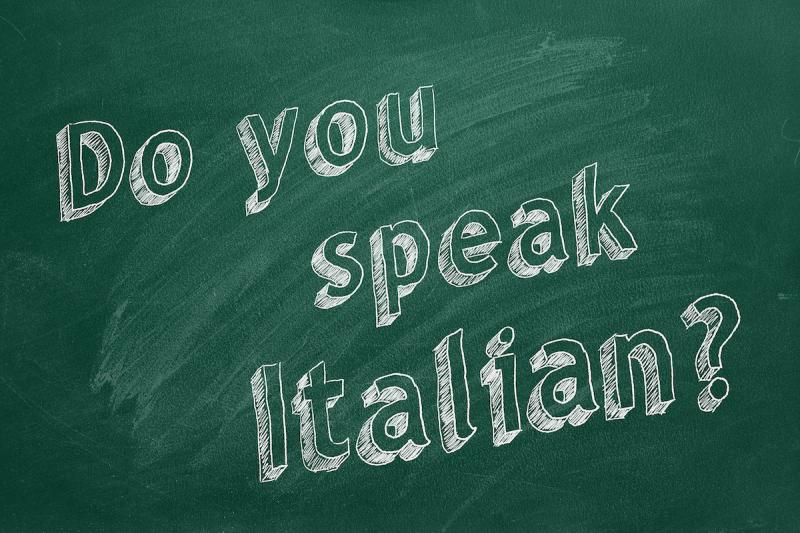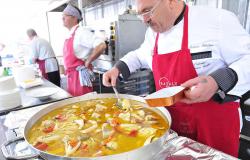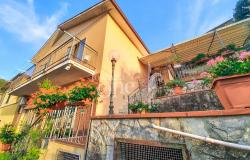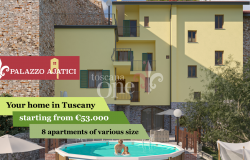Many non-English speakers find dealing with prepositions quite difficult. Indeed, using the correct preposition in the right context can be tricky for beginners and sometimes even for advanced learners in many languages. The same also happens when non-Italian tries to insert a preposition in a sentence, especially because in some cases you need to take into consideration the gender and the number of a noun following the preposition in order to combine the preposition with the right article (preposizione articolata). In this article, we’re going to find out in what cases you should use the preposition “a” in Italian, and how to say “to the” and “at the”.
First of all, the preposition “a” is used when you need to indicate the recipient of direct or indirect action. The English equivalents would be such prepositions as to, for, from, but sometimes in English the preposition is not even expressed. In Italian, all such cases require the preposition “a”.
“Grazie per l’invito!” Lo dico alla mia fidanzata.” - Thanks for the invitation! I’ll tell my girlfriend. (say to)
- Ti do la chiave. (I’ll give you the key.)
- È meglio darla a Mario. Arriva prima lui. – (It’s better give it to Mario. He arrives first.)
Hanno rubato la macchina al mio amico. – My friend’s car was stolen (from him.)
Ho fatto un tè a Jessica. – I made Jessica a tea. (for Jessica).
As you can see, you have to know the correct article of the noun to use the right form of the preposition a. It goes like this:
a + il (masculine singular) = al (al padre)
a + lo (masculine singular for nouns starting with z, pn, gn, ps, s+consonant) = allo (allo studente)
a + la (feminine singular) = alla (alla madre)
a + l’ (masc./fem. singular for nouns starting with a vowel) = all’ (all’amico/all’amica)
a + i (masculine plural) = ai (ai genitori)
a + gli (masculine plural for nouns starting with z, pn, gn, ps, s+consonant or a vowel) = agli (agli studenti)
a + le (feminine plural) = alle (alle amiche)
Naturally, personal names don’t require a definite article, so the preposition a remains invariable:
“Compro questa collana a Chiara.” – I’ll buy Chiara this necklace. (for Chiara).
The preposition a is also commonly used to express different aspects of place, focused on location, for example, to express the idea of:
Destination
La settimana prossima andiamo a Roma. – We’re going to Rome next week.
Ogni sabato mattina vado al mercato. – I go to the market every Saturday morning.
Pay attention, that in Italian, unlike in English, you have to repeat prepositions where they refer to several things or people individually:
Quest’estate siamo stati a Roma, a Rimini e a Palermo. (This summer we’ve been to Rome, Rimini and Palermo.)
Location
Ci vediamo all’angolo di Piazza Vittorio e Via Po. – Let’s meet at the corner of Piazza Vittorio and Via Po.
Vada sempre dritto e poi giri a destra per Via Cavour. – Go straight ahead and then turn right into Via Cavour.
Direction and distance
Andrea abita a 50 chilometri da Torino. – Andrea lives 50 km (away) from Turin.
The preposition a can also be used when you want to indicate a position on the body or the idea of some abstract place:
Aveva una sciarpa rossa al collo. – She had a red scarf round her neck.
C’è la mia canzone preferita alla radio. – There’s my favourite song on the radio.
- Devo parlare con Massimo. (I need to talk to Massimo.)
- Adesso è impegnato. È al telefono con il capo. (He’s busy now. He’s on the phone with his boss.)
The preposition a in Italian is also used to express time, specifically to answer such questions as “when”, “how often” and “at what time”.
To answer the question a che ora? (at what time), you can use the expressions:
Alle due/ alle quattordici. – At 2 p.m.
Alle sei di sera. – At 6 in the evening.
All’una. – At one o’clock.
A mezzanotte. – At midnight.
A mezzagiorno. – At midday.
You can also answer the question quando? (when?), indicating the month, the holiday, the time of the day, like:
a novembre – in November
a marzo – in March
a Natale – at Christmas
all’alba – at dawn
al tramonto – at sunset
A gennaio vogliamo andare a Mosca. – We want to go to Moscow this January.
Ogni sabato mi sveglio all’alba e vado a correre. – I wake up at dawn each Saturday and go jogging.
Answer the question Quante volte?/Quanto spesso? (How often?) with such phrases like al giorno, a/alla settimana, al mese, all’anno.
Antonia lava i denti 3 volte al giorno. – Antonia brushes her teeth 3 times a day.
Vado in palestra 2 volte alla settimana. – I go to the gym twice a week.
Mangiamo la pizza 4 volte al mese. – We eat pizza 4 times a month.
Vorrei andare in vacanza almeno 3 volte all’anno. – I wish I could go on vacation at least 3 times a year.
You can meet a in expressions like a lunedì, a domani, a presto, where the preposition stands for “until”.
A lunedì! – See you on Monday!
A domani! – See you tomorrow!
A presto! – See you soon!
Often the preposition a can also be used to describe the pattern of something or to explain how it is done:
Una camicia a fiori – a flowered shirt
Un palazzo a 6 piani – a six-story building
Una torta al cioccolato – a chocolate cake
Imparare a memoria – learn by heart
Fatto a mano – handmade
Of course, there are exceptions to any rule, and sometimes you will need to use other prepositions to express the same idea, but you will learn them all gradually while practicing your Italian. In the exercise below you can try to insert the correct form of the preposition a and see how it goes:
Don’t be scared by the number of rules to memorize, instead, try to listen to Italians speaking as often as you can, and eventually the correct forms of prepositions will come to you naturally. Stay tuned to learn more things about the Italian language and alla prossima!




















